௠ALPO-Japan Latest

Venus Image 2021/09/22(UT)
Niall MacNeill,Andy Casely,Detlev Niechoy
N.MacNeill,A.Casely,D.Niechoy
I had extraordinarily good seeing for this capture of Venus last evening.
The much higher sensitivity to UV of the ZWO ASI 178MM and the improved image scale versus the ZWO ASI 174MM,
I used previously,has paid dividends under these seeing conditions.
I imaged the planet for an hour and the seeing held up surprisingly¬well the whole time although it fell away a bit towards the end.¬
Once again the cloud patterns display the classic¬chevron shape.
The single image is an integration of the 3 best sequential¬captures and has easily the best resolution I've ever achieved imaging Venus in UV.
Since the conditions held up so well I decided to make an animation over the duration of the captures.
I made 17 x 3 minute captures (13ms exposure 75fps) and integrated them in lots of 4 with WinJUPOS...
and 5 for the last part when the seeing was deteriorating.
This restricted the integration time to 12-15 mins and limited the loss of definition¬due to the movement of the cloud patterns.
The animation of the 4 images thus produced shows clearly how rapidly the cloud patterns on Venus move in just the 48 mins duration.
I recently sent through the UV image from a series of runs I made on Venus on the 22nd of September.
The seeing was really excellent,for not only the Astrodon UVenus filter images,
but also for the other filters I employed....Chroma Methane Band 889nm,20 nm bandwidth,Chroma RGB and Wratten #47 Violet.
For completeness and reference I include the UV image again!!¬
I also pulled together the false colour images following the conventions:
IR(G)UV,where IR is mapped to Red,A 50:50 blend of IR:UV mapped to Green and UV to Blue
BVUV,where Blue is mapped to Red,Violet to Green and UV to Blue.
The false colour images are quite striking and different to what we normally see with these false colour combinations.
If they are of no real value scientifically,
they do make it easier for the colour vision of the human eye to take in a lot of information in one image and to appreciate the complexity.
The IR(G)UV image is very much dominated by the UV image as the patterns in IR are subtle.
I also produced a colour image from an RGB combination.
I have never seen so much structure in a Blue image of Venus.
As you can see from the BVUV image,where I have detailed the Blue component image,the patterns parallel those in Violet and UV,
but are subtly¬different and less differentiated. This means that the RGB image also displays a lot of structure,not always so apparent.
Paul Abel tells me that some people who are particularly sensitive to light at the blue end of the spectrum,
can see structure when looking through the eyepiece. Although I haven't seen that myself,there is strong evidence here to support that.

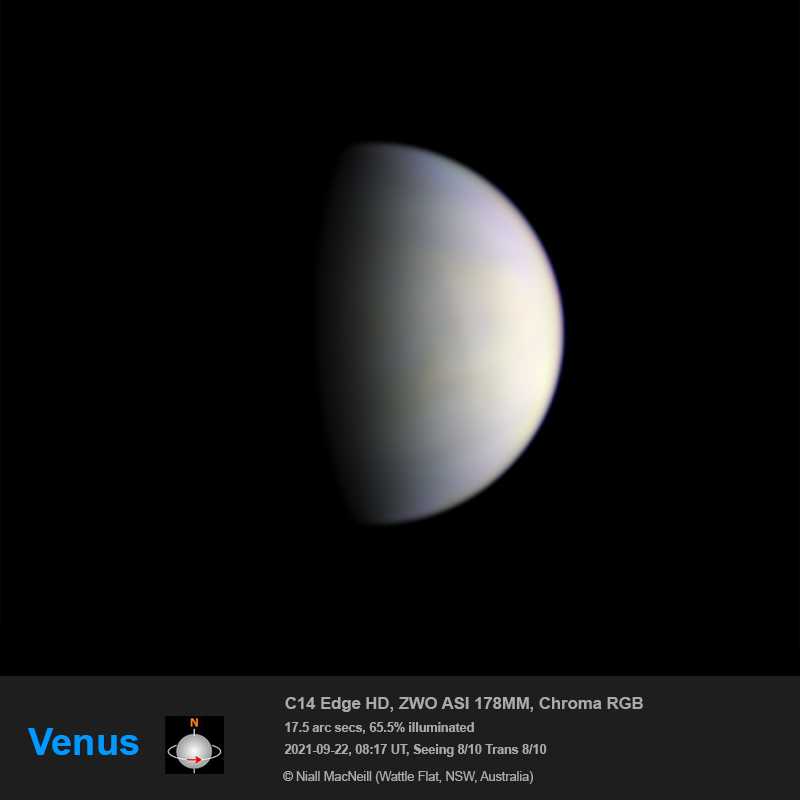
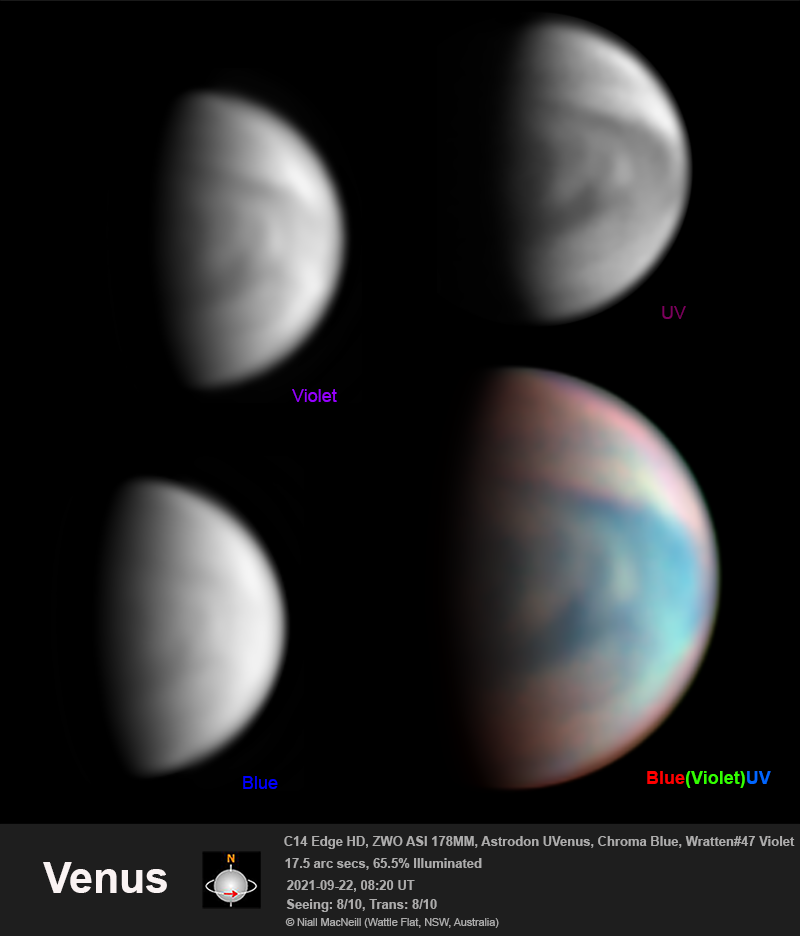
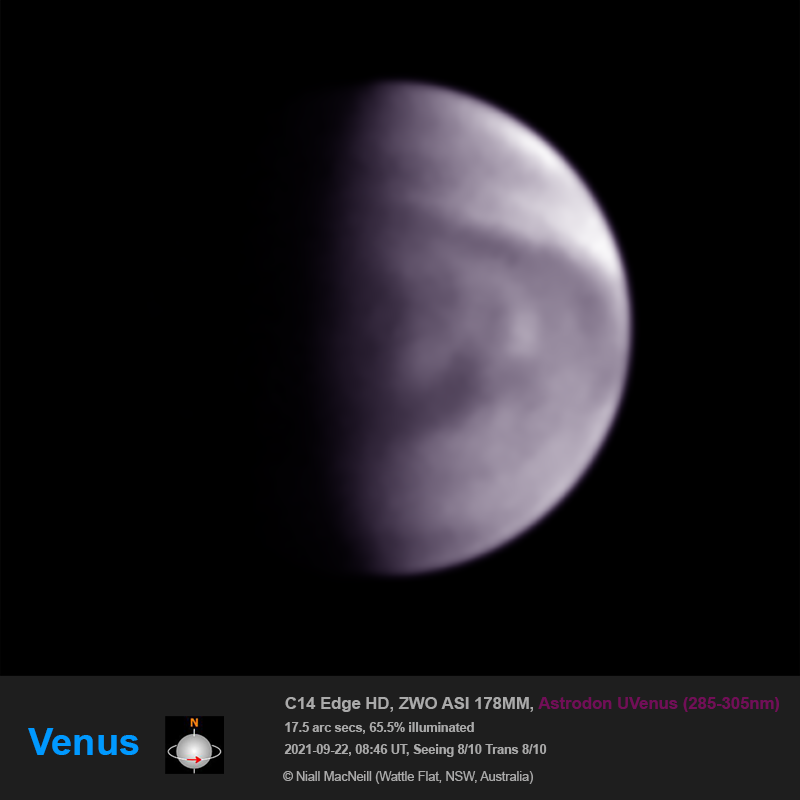
 [Niall MacNeill : Wattle Flat,NSW,Australia]
[Niall MacNeill : Wattle Flat,NSW,Australia]
I got a decent UV image of Venus on the same evening Efinally catching a little of the chevron cloud pattern in some good seeing,
imaging at f/11. Have learned the hard way that you need to minimise glass for the UV imaging,so hopefully itll improve a bit from here.
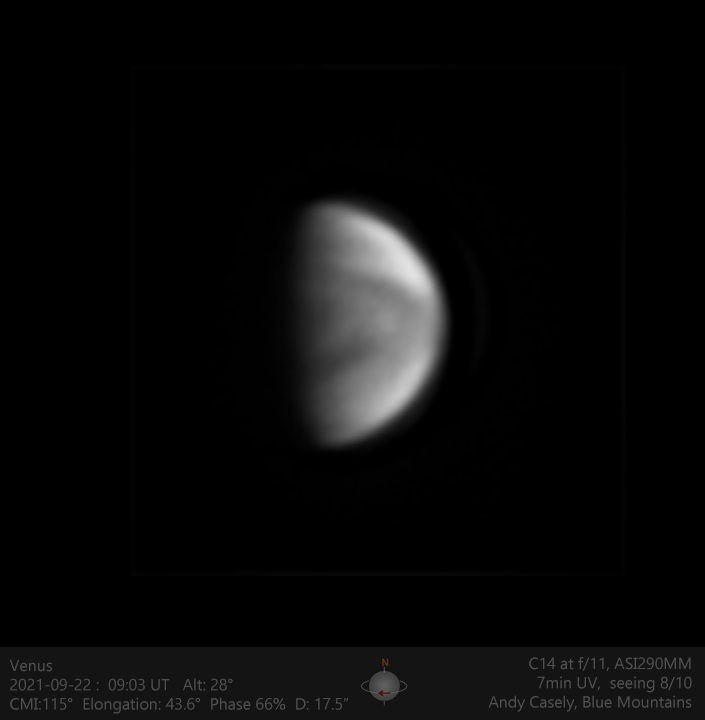 [Andy Casely,Sydney,Australiaa]
[Andy Casely,Sydney,Australiaa]
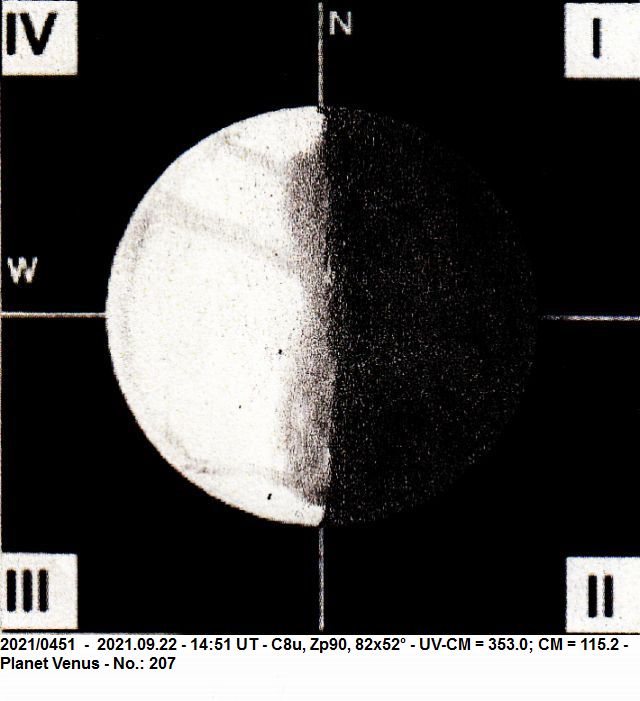
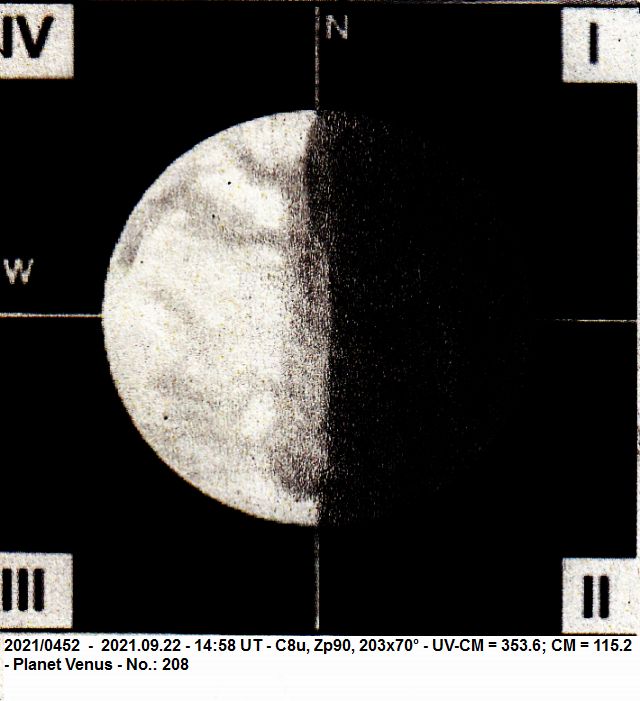

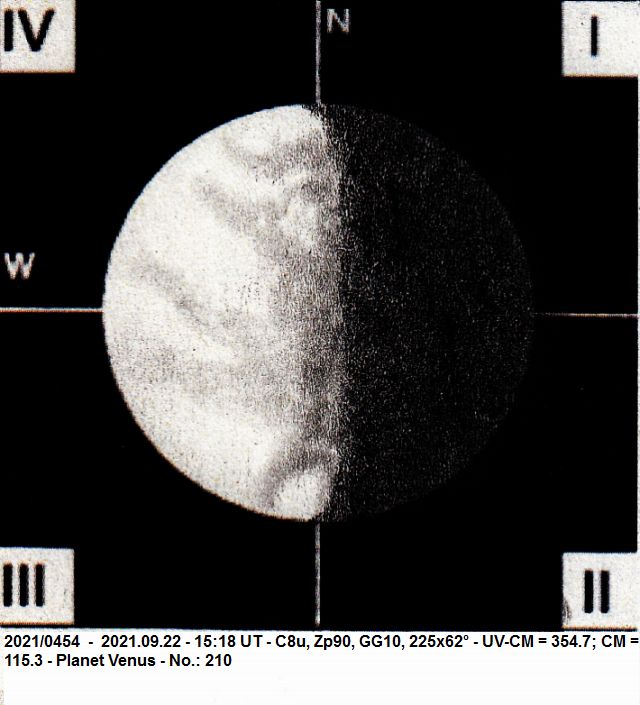
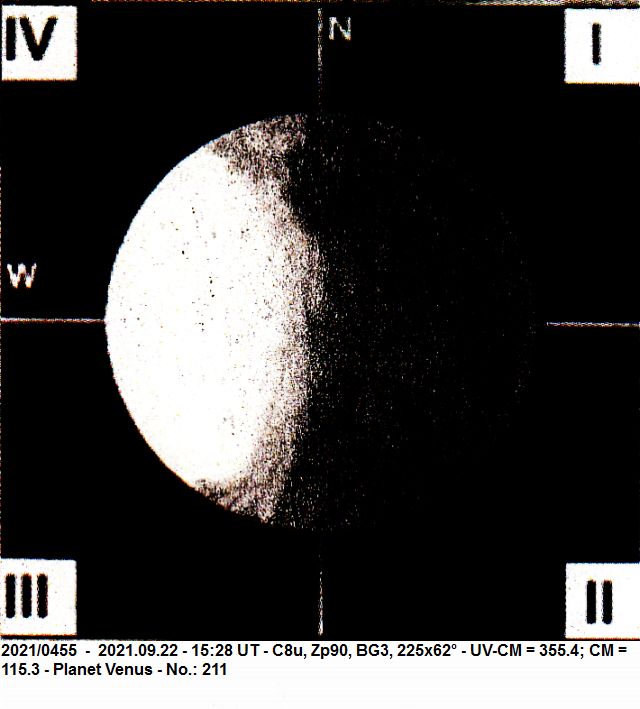

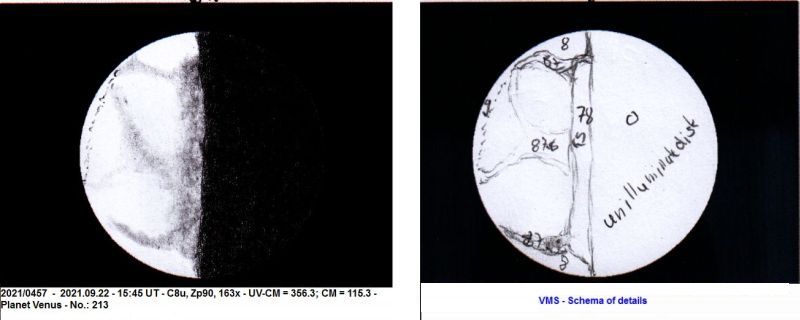 [Detlev Niechoy : Goettingen,Germany]
[Detlev Niechoy : Goettingen,Germany]






[Niall MacNeill : Wattle Flat,NSW,Australia]
[Andy Casely,Sydney,Australiaa]



[Detlev Niechoy : Goettingen,Germany]
 ALPO-Japan Latest
ALPO-Japan Latest

 Venus Section
Venus Section